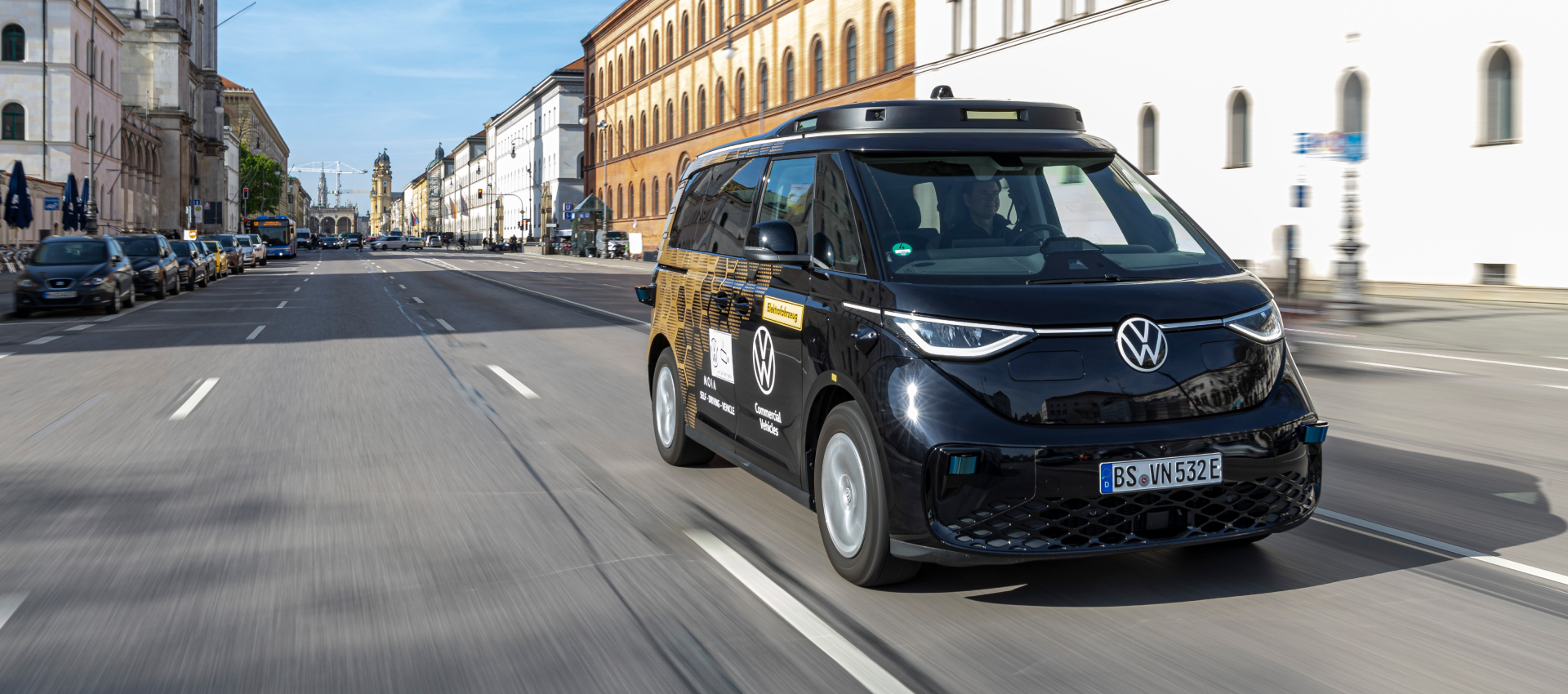It's an exciting time for autonomous driving, as advanced technologies and evolving legislation bring us closer to a future with self-driving vehicles than ever. But how do these developments look like, what does this mean for urban spaces, and most importantly, how does the law look like in different countries?
Autonomous driving will change mobility not only in the city
Silent, driverless, and available at all times, while also being more sustainable, more efficient, and more inclusive. The list of advantages of all-electric, on-demand autonomous mobility is long. Not only does it have the potential to revolutionize public transportation, but it will also completely change the way we know and use mobility. With self-driving vehicles that travel emission-free and are controlled by intelligent software using the most efficient routes, owning a private car will become less and less attractive. Instead, we will benefit from more flexible local transport services, reduced waiting times and an improved quality of life, including improved air quality.
Autonomous vehicles can help optimize traffic flow because they keep a constant distance to other vehicles and thus help reduce traffic jams. They also score well in terms of safety: around 90 percent of road accidents are due to human error. It is already apparent that driver assistance systems in vehicles can counteract this. In the future, autonomous driving could prevent many more accidents and reduce the number of injuries.
The challenges of autonomous driving
Germany is currently putting a lot of resources on vehicle and software development for autonomous vehicles. The challenges here are complex and technological. In Germany and Europe in particular, the expectations in terms of safety and data protection that need to be implemented are comparatively high. Next to that, manufacturers also must make sure the product is still competitive on an international level.
For example, it must be ensured that the vehicle is operating in a safe way in all weather conditions, seasons and in cross-border traffic. The vehicle must be able to recognize safe and unsafe situations and react in a reasonable time.
You can find out more about the opportunities and challenges of autonomous mobility here (German only) and in our blog post Autonomous driving: Significance, Functionality and State of Development.
Legislation on automated and autonomous driving in European countries
But autonomous mobility is not just a matter of technology - it is also a matter of regulation. Early legal certainty is significant for technological development. This is the only way to sustainably strengthen Germany and Europe as business and technology locations and the future of the mobility industry. How exactly have the various countries in Europe integrated autonomous mobility into their legal frameworks?
The legal frameworks for fully automated vehicles have been created quite differently in Europe. Here is an overview:
Germany: As a pioneer in terms of legislation, Germany was the first country in the world to define the legal framework for fully automated driving in specified Level 4 operating areas in 2021. This includes both the Autonomous Driving Act and the Autonomous Vehicle Approval and Operation Ordinance (AFGBV) that followed in 2022. Various model regions and real-life laboratories are helping to ensure continuous digital and connected mobility progress. There are already over 40 pilot projects with autonomous shuttle buses in local public transport.
France: France also created a legal framework for the use of autonomous vehicles at an early stage. Since 2022, self-driving vehicles up to Level 4 have been permitted in public transport. Like in Germany they are only allowed to drive in defined operating areas. In addition, it must be ensured that vehicles can be controlled and maneuvered from a control center.
United Kingdom: In the United Kingdom, driving with Level 3 automated vehicles is permitted. By 2025, further legislation is to be introduced to enable fully automated Level 4 driving.
Italy: Unlike the other countries, Italy has not yet enacted any specific laws on automated driving. However, Level 2 automated vehicles may be used in traffic.
Switzerland: In Switzerland, fully automated vehicles are only allowed on certain routes or areas. Nevertheless, Switzerland participates in various European funding projects for autonomous driving.
Spain: The Spanish government is currently working on a legal frame for the operation of Level 4 vehicles on Spanish roads. This is expected to be based on existing legislation from other EU member states.
The future of mobility is autonomous
The progress in fully automated and autonomous driving clearly indicates that these technologies will be firmly embedded in the future mobility landscape. Because of the flexible use of on-demand transport services, additional potential can be maxed out. At MOIA, we are proud to be part of this development.
